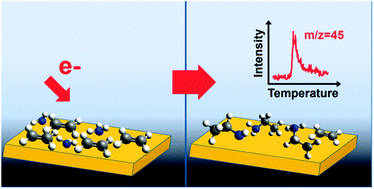Control of chemical reactions and synthesis by low-energy electrons
Abstract
Controlling the outcome of reactions is a central issue of chemical research. Physical tools can achieve this if they are able to precisely dissociate specific bonds of a molecule. However, to control synthesis, such tools must induce the formation of new bonds between two reactants to yield a more complex product. In the ideal case of an atom efficient synthesis, this product would contain all or at least most of the initial material. An electron beam is a physical tool that is capable of preparing molecules in reactive states or, at low electron energies, of initiating highly selective bond dissociation. The resulting fragments in turn can react with other molecules to yield stable products. This tutorial review focuses in particular on such low-energy electron-initiated molecular syntheses and their applications in the modification of surfaces. It thus emphasizes strategies towards the controlled and predictable formation of more complex products from small reactants initiated by interaction with low-energy electrons either through selective bond dissociation or formation of specific reactive molecular species. However, selective bond dissociation is not always desirable. This is briefly illustrated by the case of electron beam induced deposition where additional strategies may be required to control product formation.


 Please wait while we load your content...
Please wait while we load your content...